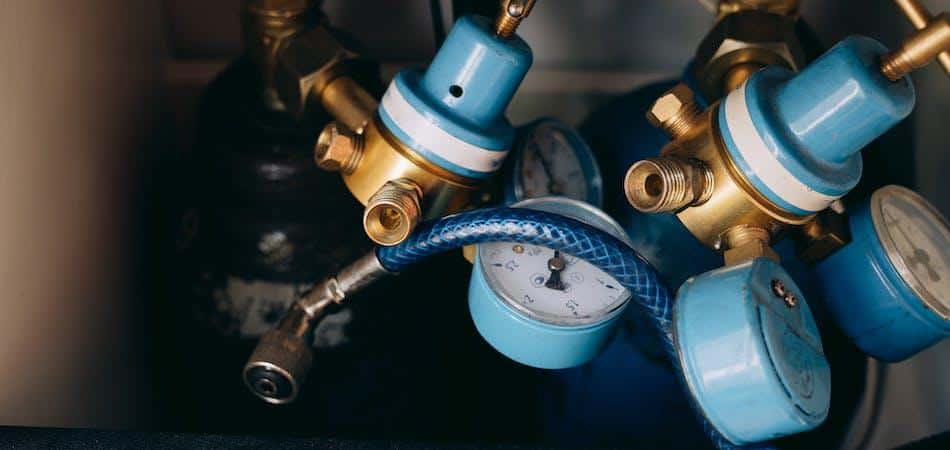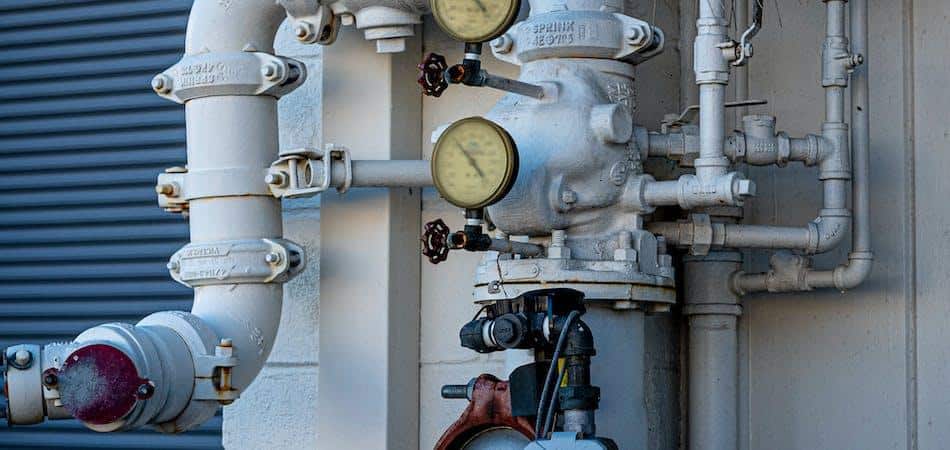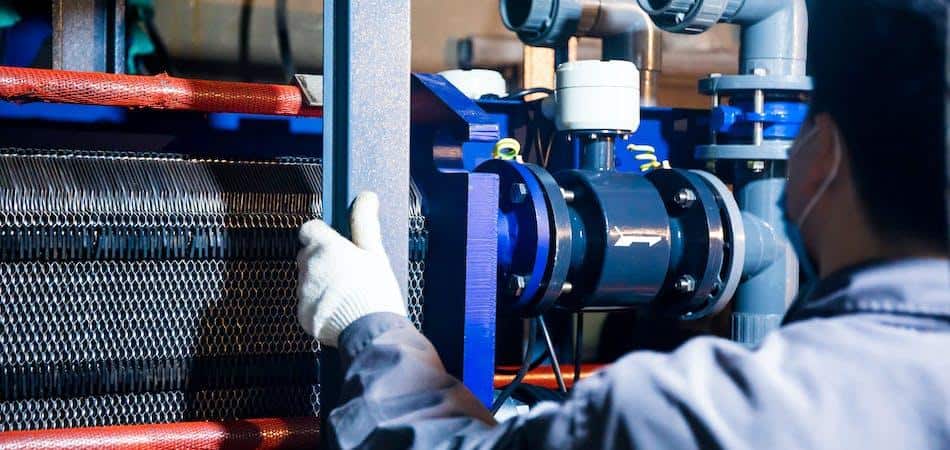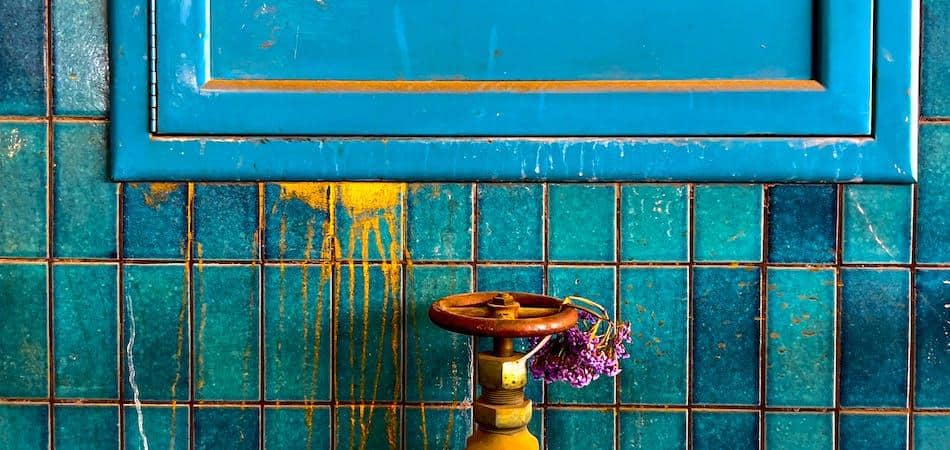Pressure Regulator Valves reduce the high-pressure water of industrial plumbing systems. This helps to lower the stress on the system’s faucets, appliances, and valves. Contrary to that, too much water pressure can lead to plumbing problems, so it is necessary to keep water pressure under control.
Every plumbing installation does not require such valves. However, a water system regulation requires industrial valves. They are needed for high-pressure water when the entering pressure is irregular for plumbing systems.
What is a Pressure Regulator Valve?
A Pressure Regulator Valve is a specialized valve that reduces incoming water flow. In essence, if the water pressure is high, it can be harmful to the plumbing system. So, a Pressure Regulator Valve reduces it to a manageable level for the home plumbing. They are installed where the main water line is present, close to the main shut-off valve at home.
High water pressure can severely damage the valves, pipes, plumbing fittings, faucets, and appliances. Valve manufacturer advises to buy them so that:
- The increased water flow will be regulated.
- There will be less strain on the inner valves of the plumbing system, pipes, and appliances.
- Leakage in shut-off valves will not be caused.
- The fluctuating pressure of water will be normalized.
Components of Pressure Regulator Valve

The components of such a valve are divided into three distinct elements by valve manufacturers. These elements are:
Restricting Element
An essential component of a pressure regulator valve is the Restricting element. Depending on the specificity of the regulator, the valve can be a:
- Poppet Valve
- Butterfly Valve
- Globe Valve
Water control valves provided by a pressure regulator valve manufacturer restrict fluid (or gas) flow in a plumbing system. They adjust to the changes in the system like:
- When pressure is dropping, they open wider
- When pressure is increasing, they narrow the opening
Loading Element
The loading element can be described as a combination of a piston actuator, weight, springs, and a diaphragm. The loading element provides force to the restrictive element (valve). This force allows the valve to open and close when needed.
To make sure that the plumbing system keeps a steady and normal pressure throughout, the loading element:
- It will help to close the valves in case of high pressure.
- It will help open the valves if there is low pressure.
Measuring Element
The measuring element is the component that is the “Sensor” of the Pressure Regulator. It is the diaphragm that calculates the inlet flow and the outlet flow of the water to keep the plumbing system in equilibrium.
How Does a Pressure Regulator Valve Work?
Manufacturers make regulator valves to preserve regular output strain continually. It is maintained despite any modifications in downstream utilization or input strain. When pressure exceeds the predetermined stage, the valves release extra pressure from the industrial machinery to maintain a balanced strain.
The high-pressure water flows into the regulator through the inlet. After that, the loading element starts working by initiating the sprung diaphragm, or piston, to open or close the valves consistent with the stress. This regulates the water pressure entering the plumbing system via the valve.
The pressure outside is consistent as compared with the managed spring placement. When any difference is detected, the valve repeats the above steps to accurately and thoroughly maintain a balanced pressure.
Types of Pressure Regulator Valves
Industrial Pressure Regulator valves are of many types. Two of the most common valves supplied to industries and corporations are:
1. Pressure Reducing Regulators
Pressure Reducing Regulators are also known as Pressure Reducing Valves (PRV). They are used to regulate or reduce the pressure (of a gas or fluid) in a system so it matches the required level on the outlet side. It controls and maintains the downstream pressure level according to the predetermined pressure levels.
Location of Connection
It can be found on the outlet side of the plumbing system.
How it Works
PRV automatically checks the pressure fluctuations in the plumbing system with the help of a sensor. After that, it acts to open or close valve openings (as needed) to maintain a regular downstream pressure.
Applications
Air-Based Systems. They are used in Pneumatic control systems, compressed air systems, and power tools. It also manages Propane and Liquefied Petroleum Gas in heating and cooking systems.
Water-Based Systems.
They are used in industrial water distribution, fire alarm systems, and plumbing systems at factories and manufacturing houses to regulate water pressure.
Mining Industry. It is employed in the mining sector to maintain pressure levels for heavy machinery and equipment.
2. Back Pressure Regulators
Back Pressure Regulators are closed control valves that maintain the predetermined upstream or inlet pressure and are controlled by it. The main goal of a Back Pressure Regulator is to control inlet pressure around a set level. Excess pressure is released when the set level is reached to keep the inlet pressure close to or below the set level.
Location of Connection
It is located at the inlet side of the system.
How it Works
A Back Pressure Regulator achieves pressure regulation by precisely controlling and limiting the upstream pressure of the system. It keeps the valve closed until the pressure increases at the inlet side. When system pressure becomes more than the loading pressure, the valve is opened to flow fluid.
Applications
High-Pressure Systems. It keeps the inlet pressure steady as a safety measure in high-pressure systems.
Fuel and Oil Burner Control. It is used in fuel and oil burner appliances for regular inlet pressure to simplify combustion.
Fuel and Oil Atomization. It is employed in fuel and oil burners in engines and burners to keep consistent inlet pressure and facilitate combustion.
Uses in Natural Gas Systems. It is used to keep inlet pressure stable in Natural Gas Systems for convenient distribution and storage of natural gas in industries.
What is the Difference Between Pressure Reducing Valves and Pressure Regulator Valves?

Pressure Reducing Valves
- Are used in all the systems that relate to pressure in gases
- Located at the outlet side of the system
- Control the Outlet or Downstream pressure and maintain outlet pressure
- Open and close with changes in the system to keep overall outlet pressure stable
Pressure Regulator Valves
- Are used in all the systems that relate to stress in fluids (water) in a plumbing system
- Located on the inlet side of the plumbing machine
- Control the Inlet or Upstream pressure when it rises above a predetermined degree.
- Open the valves while inlet pressure rises above the predetermined stage
Assistants in Regulating Pressure

On an industrial level, some other regulators assist the pressure regulator valves. They are used in two different types which are:
Single-Stage Regulators
Single-stage regulators have the pressure control valve, restrictor, and sensor in the same body.
This type of regulator maintains stable outlet pressure even when there are changes in upstream pressure. It is best used in applications where stillness is the key.
Double-Stage Regulators
Double-stage regulators are two single-stage regulators that are adjusted in the same home.
They regulate pressure in two steps. Because of that, they provide more stable and safe pressure regulation. They are best used in applications where pressure varies.
How to Install a Pressure Regulator?
Installing the new water pressure regulator valve is a little bit harder because there are currently no threaded couplings. Unless you are comfortable working on plumbing jobs, it would be advisable to get the help of a plumber or contact a pressure regulator valve manufacturer for this job because some installations may involve a relocation of the main water shut-off to make room for the water pressure regulator.
- First, a baseline water pressure reading is obtained by measuring the pressure with a gauge from either a hose bib or a washing machine faucet.
- Find the water main shut-off and turn off the water.
- To drain the water system, open the faucet closest to where the main shut-off valve enters.
- With the threaded couplings in place, measure the length of the water pressure regulator by employing a tape measure and then make this measurement on the pipe immediately past the main shut-off valve.
- Put a bucket and towel under the pipe you are working at, then cut it with a pipe cutter by your previous measure. The couplings will slide onto the end of the pipe, which is still in place, so be careful not to cut off too much pipe.
- Clean the pipe and fittings using grit cloth and a wire brush, then apply flux paste on the pipe and fitting to enhance soldering. Thread the couplings onto the pipe and introduce heat to the fitting using a blow torch.
- Once the fitting is heated sufficiently, touch it with the solder and allow the solder to flow into the small gap between the fitting and the pipe. Carry out the same procedure with the second coupling before the metal cools down.
- Once the threaded couplings have cooled sufficiently for touching, you may install the water pressure regulator and hand tighten the couplings.
- Finally, conclude by tightening the couplings with the Channellock pliers.
- Open the water at the significant shut-off valve and listen for any leaks.
- Shut off the faucet after you have vented out any air lodged in the system.
- Check water pressure after installation and regulate it as necessary. To make changes, you will have to loosen the locknut on the adjustment screw and then rotate it up or down until water pressure is set at the desired level, which is measured using a pressure gauge that can be connected to a threaded hose bib somewhere in your house.
How to Replace a Pressure Regulator Valve?
From ES Complete Yard Work
If the plumbing is sound and installed correctly, changing an old one’s water pressure regulator is relatively easy. Ideally, an inlet water pressure regulator should be fitted on the pipe immediately after the main valve, using a couple of threaded couplings to secure it.
- First, turn off the water supply to your residence on its main shut-off valve.
- Turn on the faucet closest to the main shut-off valve to remove any water in the system.
- Set a pail and towel underneath the present non-adjustable water pressure regulator.
- One should loosen the threaded couplings using Channellock pliers, removing the old pressure regulator with water.
- Handwork the new water pressure regulator and thread coupling. Lastly, channellock pliers should be used to clamp down the couplings.
- Open the water on the main shut-off valve and check leaks.
- Make sure you shut the faucet you had opened after venting air out of it.
Common Pressure Regulator Problems

Installing Pressure Regulator Valves in your home will bulletproof the life of your home’s plumbing system. Your faucets, valves, and water appliances will last longer as well.
Nevertheless, you should contact your valve suppliers if you have a faulty pressure regulator. It could allow high-pressure water to flow via the plumbing system and result in issues and problems such as:
Irregular Fluctuations
The different peak hour time periods will lead to a drastic change in water pressure. However, if there are unbalanced pressure fluctuations without any reason, it could be attributable to a faulty pressure regulator.
Sharp Levels of Water Pressures.
Therefore, you should conduct a regular check to find out whether there are some problems with the pressure regulator since you frequently have high and low water pressure.
Other Indicators of a Broken Pressure Regulator
- Piping failure (due to excess pressure for a long time)
- Pipes that knock and water hammering
Maintenance of Pressure Regulator Valves
At any industrial operation, keen observations are needed to ensure valve maintenance. A faulty pressure regulator valve will only cause problems for the work water regulation system. To avoid that, you should employ the following examinations for industrial as well as home improvement solutions:
1. Check for Leakage
The pressure of the water determines the valve pilot systems. The functioning of the valve in the pilot system will depend on any leaks or cracks. Should a bore tube break, leaking results? Additionally prone to breaking are excessively tightened flare fittings above the pilot.
Consequently, one should follow all the directions given by the valve providers. You should routinely evaluate the state of the valve and the overall pilot system.
2. Air in Pilot System
Made to control “water pressure,” pressure regulator valves do not maintain air pressure. The system will suffer if air finds its way into the pilot system.
Any air in the water regulator valve pilot system will reduce valve efficiency. This will ultimately cause breaks in the valve or fractures and leaks. Look for any air in the pilot system, then. See manufacturers of pressure regulator valves if you discover any anomalies or doubts.
3. Clean Dirty Strainer
A dirty filter commonly causes control valve failure. The dirty filter blocks the flow of water because of debris. This blockage leads to dysfunction in the valve system, leading to leakage or complete breakdown.
4. Test Main Valve
The main valve diaphragm can last years, depending on the water’s minerals and fluctuation. The entire water control system will be compromised if problems with the main valve diaphragm develop.
Remove the bonnet top plug, separate the pilot system, and open the main valve to check the diaphragm’s condition. The diaphragm is leaking if water keeps flowing. This calls for looking at the main valve cover and bonnet.
5. Check Ball Valve
To ensure the proper functioning of ball valves, ensure they are open and in the same position as they were found. Give each valve a quick turn to ensure movement. Ensure solid stainless steel handles on ball valves to prevent rusting.
Frequently Asked Questions
Here are some questions that are frequently asked about Pressure Regulator Valves:
What Is a Pressure Regulator in Manufacturing?
Water Pressure Regulators are a type of valve regulator manufacturers create to monitor industrial systems’ water flow. It reduces the pressure of entering water into the house’s plumbing systems. The valves open and shut to balance incoming and exit pressure. This maintains constant system water pressure generally.
What Is Normal for Water Pressure?
Usually, running 40–80 PSI (pounds per square inch) in a specific building is commercial water pressure. Architects and engineers often create a structure that fits a target PSI and makes sense for its use. The plumbing infrastructure is also designed to manage water pressure within its range.
How Does a Pressure Regulator Valve Work?
A Pressure Regulator works by using three elements: a restrictor (valve), a loading component (spring/piston), and a measurer (sensor).
Sensor records the fluctuations in the pressure of a system. If there is some irregularity, the valve opens/closes to compensate for pressure in the system as needed.
Who is the manufacturer of valves in China?
Plumberstar, a leading China valve manufacturer and supplier, specializes in valve design, manufacturing, and supply. We have established a sales company to handle exporting business professionally to provide quality and greater assurance of our products.
Do I Need a Pressure Regulator Valve?
Yes, especially if you are constantly facing issues with high-pressure water at your home and problems like pipe leakage, knocking sounds from pipes, etc. The valve industry is vast, but look for the best value for your location and environment.
Do I Have a Pressure Regulator Valve?
No problems with water pressure, banging sounds, or leaking would indicate that your house already has a pressure-regulating valve installed. Should you be concerned, you can schedule an examination with a qualified valve distributor. They will inform you whether you have a pressure-regulating valve and whether it requires replacement, etc.
How Long Does a Pressure Regulator Valve Last?
A water pressure regulator’s life expectancy usually falls between 10 and 15 years. On the other hand, if routinely maintained, you may find a regulator malfunction after three years and one still correctly running at twenty years old.
How Much Do Pressure Regulators Cost?
The price to install a pressure regulator valve starts in 2024 at $5 – $500 per valve. However, the prices can vary depending on the quantity you may require. For instance, you can save money if you order in bulk. Get your quote now!
Conclusion
PRVs are used to maintain normal pressure throughout a commercial plumbing system. This specialized valve helps you in various ways and extends your plumbing system’s lifespan by making it less pressurized.
All industries and companies should ensure quality pressure regulators are installed. This will help them avoid the problems of not having pressure regulators. Contact us now to avail durable and high-end PRVs today!
